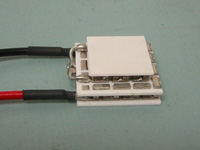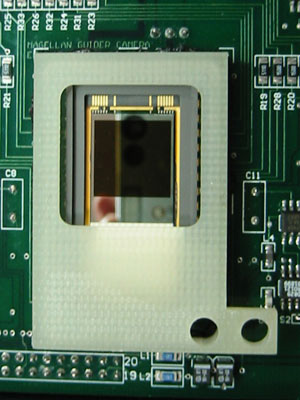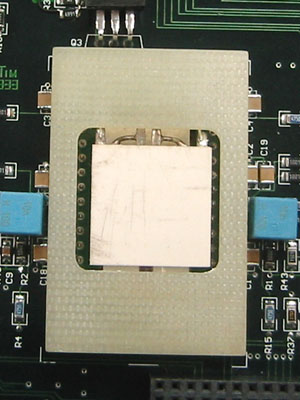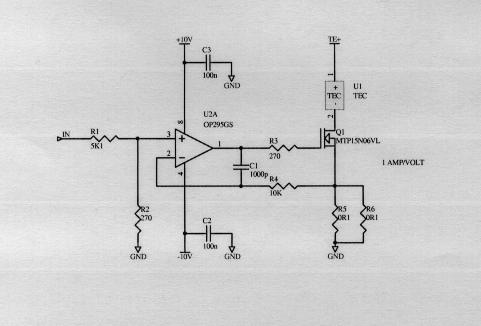
To reduce the dark current and to allow the CCD amplifiers to operate with lower thermal noise, the CCD is thermoelectrically (TE) cooled within a sealed, dry gas filled housing. The cooling system uses an off-the-shelf two-stage Melcor/Laird thermo-electric cooler (2-CP-055-065-31-17L). The CCD temperature is monitored with an off-chip sensor (AD590) mounted inside the housing.
[Note: TE coolers are solid state semiconductor devices, made from doped bismuth telluride. A typical TE cooler consists of alternating blocks of n-type and p-type material sandwiched between two opposing thin alumina plates. Driving a current through the TE material carries heat across the material, creating a temperature difference (Peltier effect).]
 Front face of FR-4 enclosure |
 Back face of enclosure |
At room temperature, the typical ccd dark current in multi-pinned phase mode (MPP) of 250 e-/pix/s will be noticeable even in short (50 ms) exposures. At a target ΔT of 40 °C, the dark current is reduced by a factor of 125 to about 2 e-/pix/s, calculated using n = 122 n0T3 exp[-6400/T], for temperature T (K), and n0 dark counts at room temperature.

Adjustable precision current source for TE cooler
An adjustable current source provides up to 3.0 amps to the TE
cooler,
which is rated for ΔT = 83 °C under ideal no-load conditions.
In practice, a ΔT of 40 °C is achievable with a TEC current
of about 2.0 amps. For lower power consumption, much of which is
used by the TEC circuit, the TEC does not need to run at maximum
current.
With the temperature sensor, it would be possible to implement closed loop feedback. In practice, running a fixed current through the cooler works well for guider applications.
A liquid-cooled heat sink removes the heat from the TE cooler hot side. Even at low flow rates (a few litres/min, the entire CCD housing can be rapidly chilled to the fluid temperature (nominally 10 °C at the telescope). The TEC drive transistor is mounted on the heat sink as well, to prevent it overheating.
Greg Burley (burley@obs.carnegiescience.edu)
Ian Thompson (ian@obs.carnegiescience.edu)
